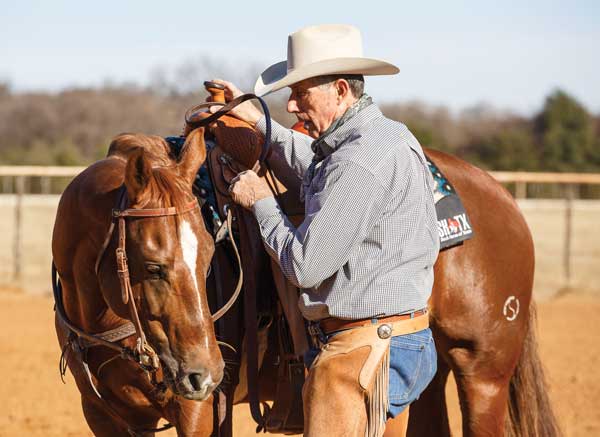
A “soft feel” can mean many things to a horse person. From the rider’s ability to communicate with the horse through rein and body cues, to the horse responding to those cues, this term encompasses the dialogue between both parties.
For AQHA Professional Horseman Allen Walton, a soft feel is when your horse easily responds to your direction. But this doesn’t happen automatically—a horse’s natural inclination is to resist pressure. To encourage the optimum communication between you and your horse, Walton has a few exercises he recommends.What Does It Mean?
To Walton, a soft feel is a give and take between horse and rider.
“When you pick up the reins and ask for some collection and the horse resists, he’s pushing on you,” Walton says. “A soft feel means no resistance.”
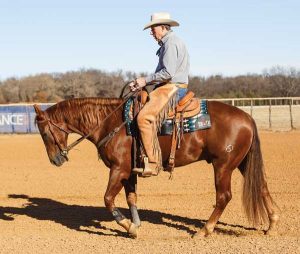
Walton says the communication between you and your horse is one on one. You have to be sensitive to the horse and your horse has to be sensitive to you, which creates a balance. Your reins are the communication you have with your horse—they’re the method in which you direct his movement.
“It doesn’t just mean picking up the reins,” Walton says. “When you’re doing groundwork with your horse, when you’re leading him—anything to do with the horse—you can ask for a soft feel.”
This communication is not limited to your hands. Your legs and body play a part. You will use your legs to drive your horse toward the bridle. Any time you pick up the reins to ask for a soft feel and your horse resists, you’ll use your legs to ask him to go into the bridle.
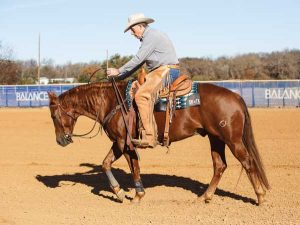
A soft feel also means your horse turns his head toward you when you apply pressure to the lead rope, or he picks up his foot when you slide your hand down the back of his leg so you can clean it, or he moves aside when you ask him to give you space in a stall.
When your horse braces his body against your cues, he’s not going to be able to give and take when you ride him, and he’s not going to be able to do the maneuvers you’re asking of him.
Teaching Your Horse
You have to be consistent in the way you work with your horse, says Walton. There are many times during your interaction with your horse where you can practice developing a soft feel.
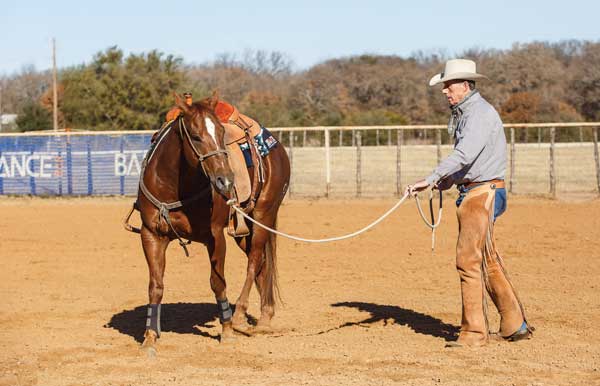
When you ask for your horse to give to your hand in the saddle or on the ground, for example, you must give him a release when he does so.
“There has to be a reward for responding to you,” Walton says. “If he’s bracing against you and you show him that you’ll brace back until he gives and becomes soft, that softness becomes his release. Your release of pressure becomes his reward.”
ON THE GROUND: With your horse outfi tted in either a halter and leadrope or a bridle and reins, you can stand beside your horse and ask him to give his face toward you with your hands on one rein or leadrope. Once he responds toward you, release your pressure, and repeat.
Make sure to do these exercises on both sides. You can ask your horse to soften and lower his head, or to soften and give to the side.
You can step to the end of your reins or lead and ask your horse to give from further away, and you can ask your horse to back away from you. Keep your responses consistent as you build an understanding with your horse.
IN THE SADDLE: Ask for your horse to soften at the poll and jaw by cueing with your reins as you walk in a circle. When he responds by softening his pressure against the reins and giving with his face, release your pressure, then repeat on the other side. You can ask him to give with his face, shoulder, ribs or hip fol-lowing the same pressure-and-release system.
What to Avoid
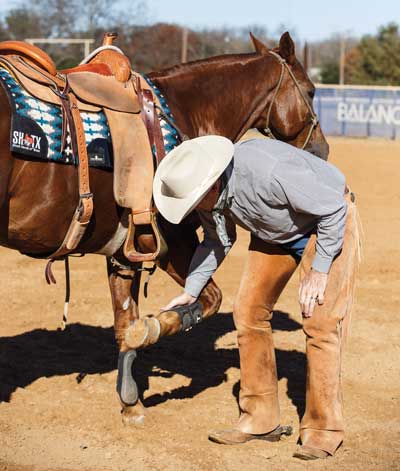
Inconsistent cues will make your cues have no meaning. If you’re cueing with your reins and he softens his mouth toward you, then you release your rein pressure. This also applies with leg pressure.
“Any time you put pressure on the horse with your reins or your legs and he responds and sof-tens to you, then you give him a release of some sort,” Walton says. “But if you’re not consistent with your cues, your horse will become confused.”
Working with your horse on these concepts every time you interact with him will increase your communication and build a foundation for more complicated training.
This article about developing a soft feel in your western horse appeared in the April 2020 issue of Horse Illustrated magazine. Click here to subscribe!
"soft" - Google News
March 18, 2021 at 10:19PM
https://ift.tt/3eVK144
Western Training: Developing a Soft Feel in Your Horse - Horse Illustrated
"soft" - Google News
https://ift.tt/2QZtiPM
https://ift.tt/2KTtFc8
Bagikan Berita Ini
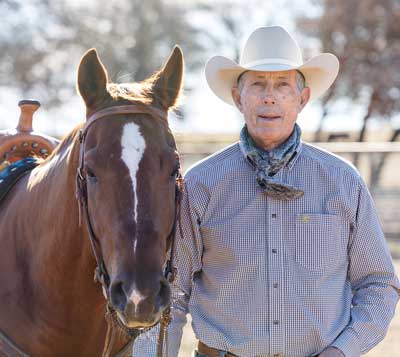














0 Response to "Western Training: Developing a Soft Feel in Your Horse - Horse Illustrated"
Post a Comment